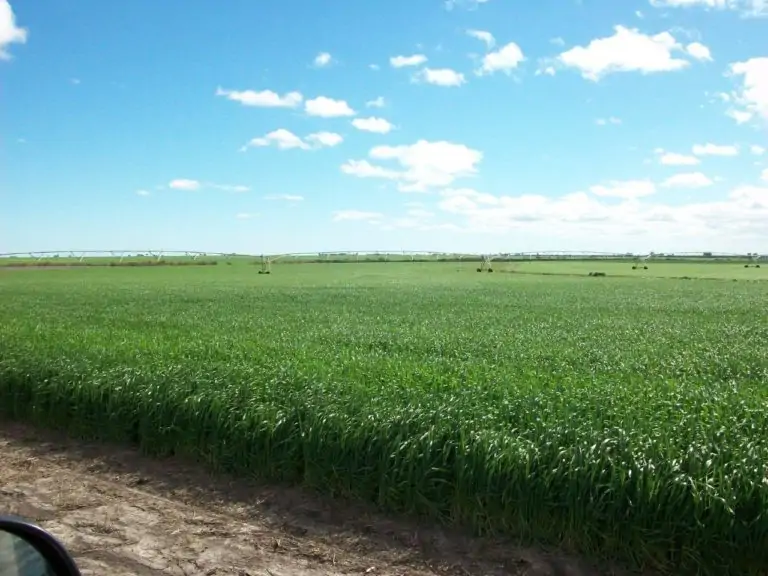As countries race to increase solar capacity and meet net-zero goals, agrivoltaic solutions are gaining attention. By utilising the same land for both crops and solar panels, these systems are one of a select few capable of addressing both energy and agricultural needs simultaneously.
Agrivoltaic systems hold great potential for contributing to food, water, and energy security, as they help optimise land use, enhance crop resilience and improve resource efficiency. They are also particularly beneficial in regions facing harsh growing conditions, which is likely to be a key consideration as global populations grow and climate challenges intensify.
This article discusses the primary types of agrivoltaic farming systems, their benefits, and the critical challenges that must be addressed to fully unlock their potential.
Agrivoltaic configurations
Three primary configurations are commonly utilised in agrivoltaic systems: low-profile solar arrays, elevated structures, and bifacial systems, with the optimum configuration depending on the specific goals and conditions of the farm, as well as its agricultural and energy requirements.
With low profile configurations solar panels are placed close to the ground, with crops planted between the rows. Careful spacing of panels ensures that agricultural machinery can navigate between. By minimising the shading of crops, this configuration tries to limit disruption to crop growth and maximise both crop yields and energy production.
In contrast, elevated structures try to create enough clearance for agricultural equipment or livestock to move underneath the panels, which are mounted onto taller frameworks. This configuration is particularly beneficial in large-scale farming or pastoral systems, where the panels’ shade can protect crops from excessive heat and improve animal welfare. At the same time, water evaporation has the added benefit of cooling the panels and boosting energy output. This symbiotic relationship can significantly improve both agricultural productivity and energy efficiency. For instance, certain crops like peppers have shown a threefold increase in production under agrivoltaic systems.
Bifacial panels capture sunlight from both sides, enhancing energy efficiency by making use of reflected light from the ground or nearby surfaces. They perform exceptionally well in regions with high reflectivity, such as deserts. Studies have shown that bifacial panels can not only increase electricity generation, but also create even shadow distribution across agricultural spaces, which can be advantageous for crops which require less sunlight. Moreover, bifacial configurations’ ability to generate more energy under varying light conditions, and throughout the day, means they can generate electricity during times when demand and price is higher, providing greater price-weighted energy returns.
Benefits of agrivoltaic solutions
Farming systems that integrate solar energy generation and agriculture can provide a variety of benefits such as:
Food and water security
Agrivoltaic solutions can help stabilise food production and boost resilience in the face unfavourable agricultural conditions. By providing shade, solar panels can reduce heat stress on crops and improve water-use efficiency. For instance, studies have shown that tomato and jalapeños grown in arid environments had a 65% and 157% higher water-use efficiency respectively under agrivoltaic systems, compared to conventional farming systems. Moreover, shading provided by solar panels can mitigate evapotranspiration rates by 14 – 29% and save up to 20% on irrigation water, resulting in healthier crops and potentially higher yields. As a consequence of this, agrivoltaic systems can play a significant part in enhancing food and water security, particularly in arid regions such as the Middle East, and parts of North Africa, where extreme heat and water scarcity severely limit agricultural productivity.
Land-use efficiency
With the global population set to rise by an estimated 2 billion people in the next 30 years, agricultural land is at a premium. While the installation of solar panels at a commercial scale goes a long way to alleviating our dependence on fossil fuels, it requires vast amounts of land that could otherwise be used for agricultural production. Agrivoltaic solutions’ ability to simultaneously generate solar energy and cultivate crops, enables more efficient use of limited land resources, addressing both food production and renewable energy needs. By combining solar panels with agricultural activities, these systems help alleviate pressure on agricultural land, while supporting sustainable energy generation.
Climate resilience
Increasing climate resilience within the global food system is key to combating the twin threat of food insecurity and malnutrition. Agrivoltaic solutions enhance climate resilience by providing shade. This reduces plant heat stress and helps conserve soil moisture. This can significantly improve crops’ ability to grow in challenging climates. For example, in some regions agrivoltaics has shown a 15% increase in soil moisture and markedly higher crop yields.
Additional revenue streams
Agrivoltaic solutions offer farmers an innovative way to diversify their income. It is estimated that the economic value of agrivoltaic farms can be 30% higher than conventional farms. This is primarily achieved by selling excess energy produced by solar panels back to the grid, but can also be supplemented by government incentives, such as subsidies, tax benefits, and grants. Agrivoltaic systems can also help lower operational costs, by reducing the need for expensive irrigation or cooling systems. They may even serve as a means of harvesting rainwater, which can minimise reliance on external water sources and cut costs further.
Perhaps more importantly though, agrivoltaic systems enable farmers to improve their financial resilience. By generating incomes from both agriculture and energy production, farmers can diversify their revenue streams and build a healthy buffer against market fluctuations and crop failures. This is crucial in an industry where income can fluctuate dramatically.
Overcoming barriers to agrivoltaics adoption
Despite the significant advantages of agrivoltaic systems, widespread adoption is hindered by several technical, economic, and regulatory issues.
Technical considerations
The efficacy of agrivoltaic systems depends heavily on site-specific factors such as climate, soil type, and crop compatibility. Consequently, a considerable amount of research is required by farmers to identify the crops and equipment best suited to their needs. Added to this are concerns about reduced agricultural productivity and the prospect of operational challenges. To overcome these barriers, further research and data-driven solutions will be required to identify optimal crops and develop adaptive farming techniques. Moreover, technical solutions must address concerns around the durability of panels in agricultural settings and ensure that agrivoltaic systems are designed to withstand rough management and physical interactions with livestock.
Economic incentives
High initial investment costs may also deter would-be practitioners, especially where economic incentives are unclear. Farmers are likely to remain reluctant to invest in the technology without clear financial incentives or long-term assurances of profitability. This is especially true where there is a lack of belief in the economic viability of such systems. Offering targeted financial incentives, such as government subsidies, tax breaks, or low-interest loans, could help alleviate some of these concerns. As could the development of public-private partnerships. Similarly, strengthening local energy markets, or guaranteeing fixed-rate payments for surplus energy exported to the grid, can also enhance their economic appeal, especially for farmers in remote areas who may face difficulties connecting to the grid.
Policy support
Without doubt, bureaucracy and unclear regulatory frameworks hinder adoption. Farmers frequently bemoan permitting processes and the regulatory requirements required for dual land use. Streamlining such procedures and introducing zoning laws that facilitate the integration of agrivoltaic systems into agricultural landscapes could significantly accelerate adoption, as would tax incentives. Harmonising energy and agricultural policies may also hasten the adoption process. Additionally, technical assistance and education on best practices will equip practitioners with the knowledge and skills needed to manage agrivoltaic systems effectively.
Harnessing agrivoltaic solutions
Agrivoltaics offer an innovative solution to some of the pressing food security and renewable energy challenges. By effectively combining solar energy production with agricultural practices, these systems provide multiple benefits. At the same time, a wide variety of agrivoltaic systems and configurations make for a highly adaptable and promising approach to sustainable land management,that can be tailored to different crops, climates, and regions. However, to fully realise the potential of agrivoltaic solutions, several economic, technical, and regulatory barriers will need to be overcome.
At Farrelly Mitchell, we are committed to the development of sustainable and renewable energy solutions within the food and agribusiness industry. Our sustainability and ESG experts provide a comprehensive range of clean energy consulting services that maximise the long-term performance and profitability of renewable energy assets. We use on-site audits, market intelligence, and data-driven insights to assess our client’s operational performance, and develop customised strategies that improve their energy efficiency. Our food and agribusiness services run the gamut, from agtech and green finance consulting to regulation & policy advisory. Contact our team today to explore how we can help you enhance your operational resilience, reduce your carbon footprint, and unlock new revenue streams with innovative energy solutions tailored to your needs.














